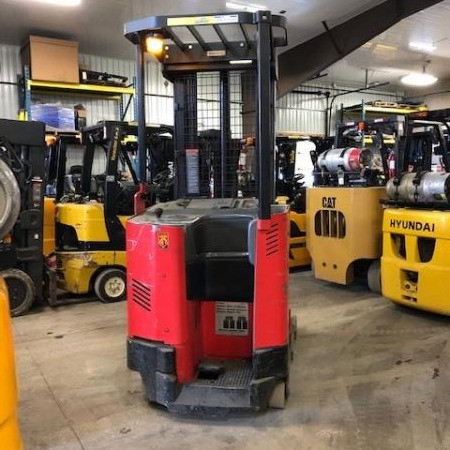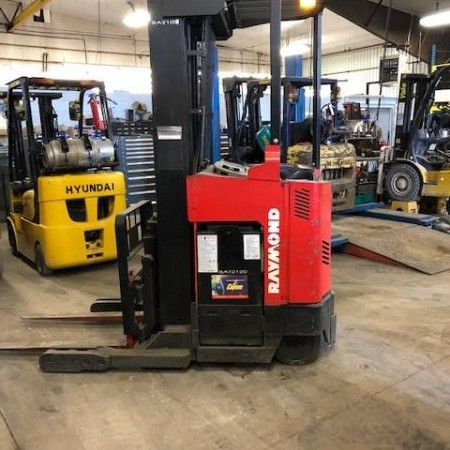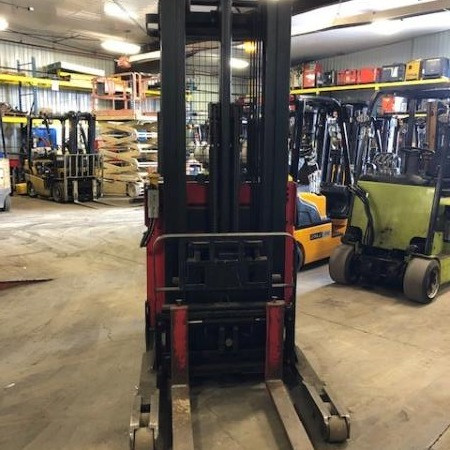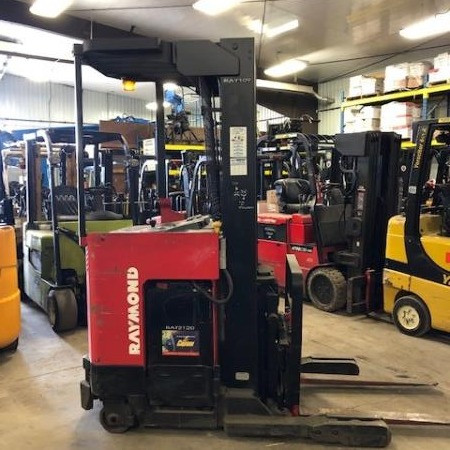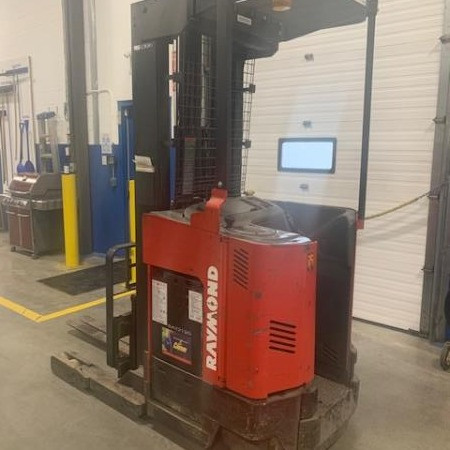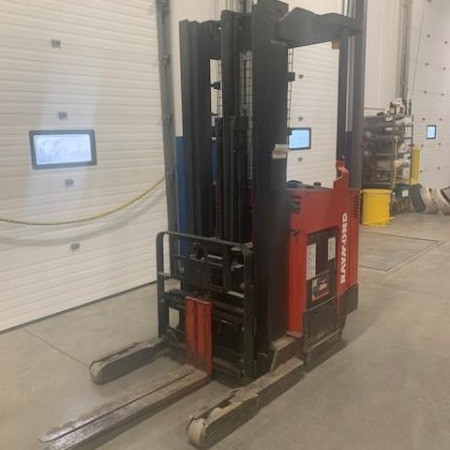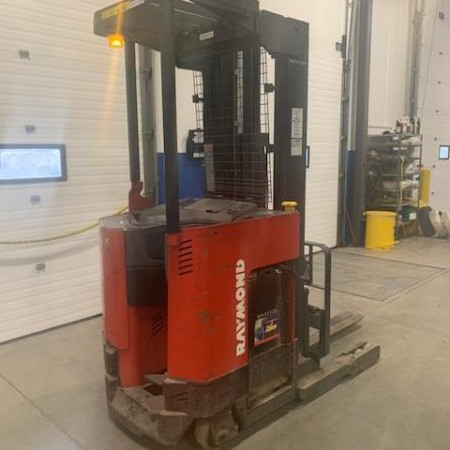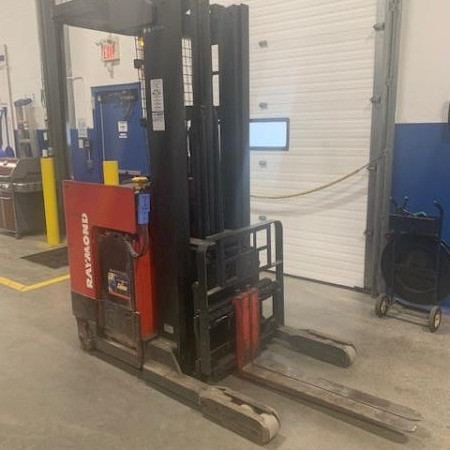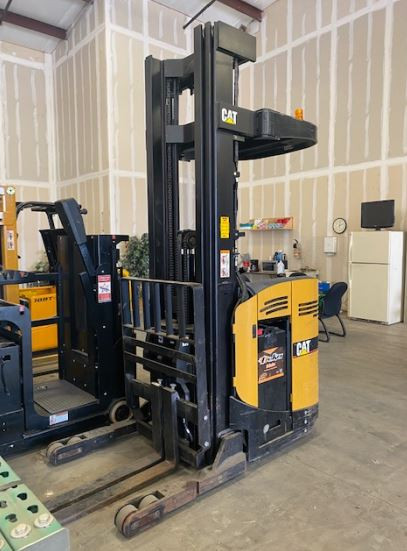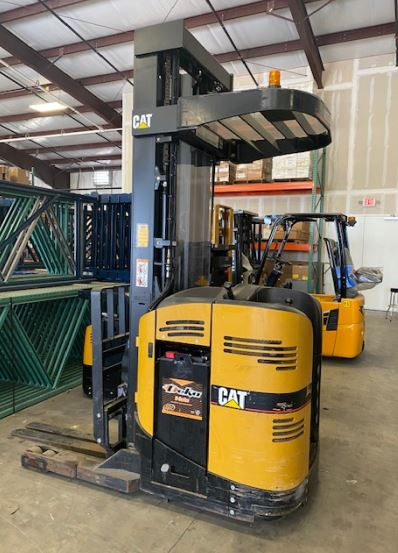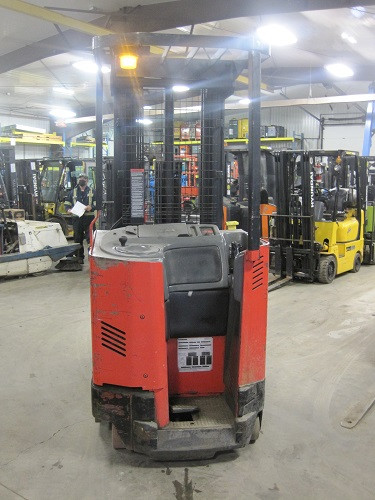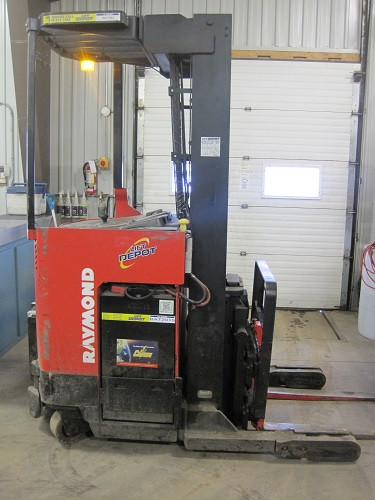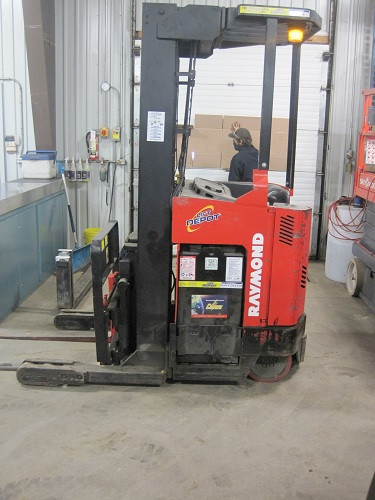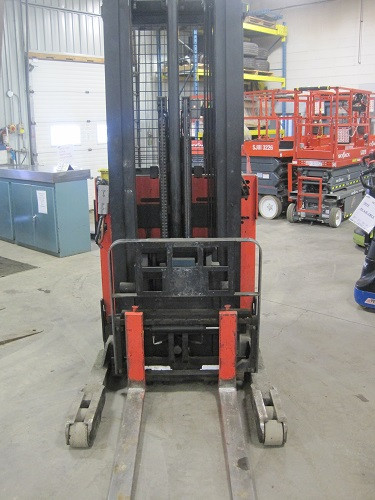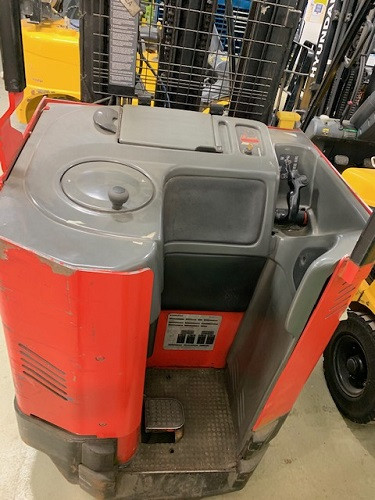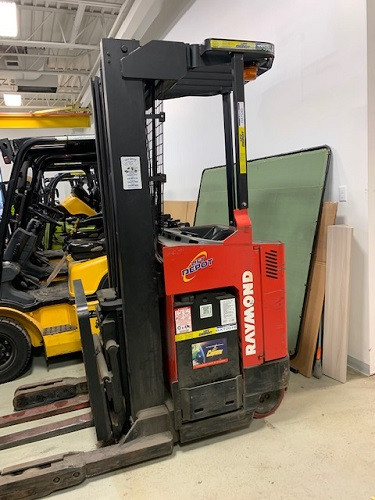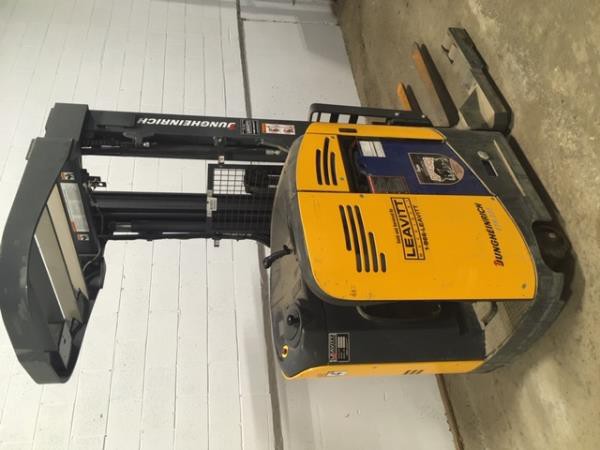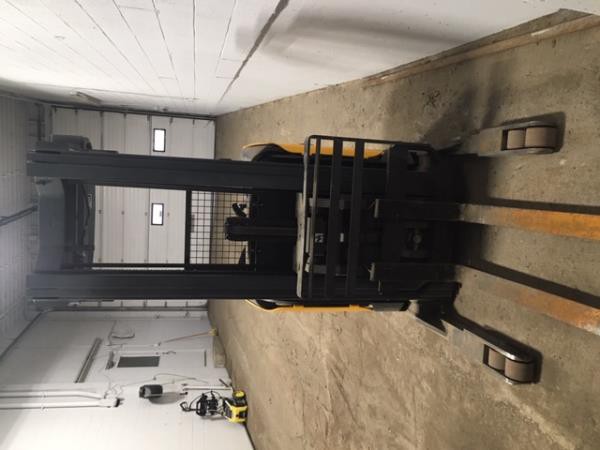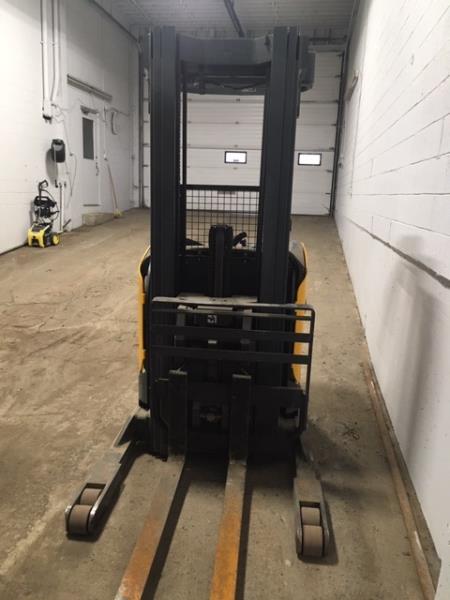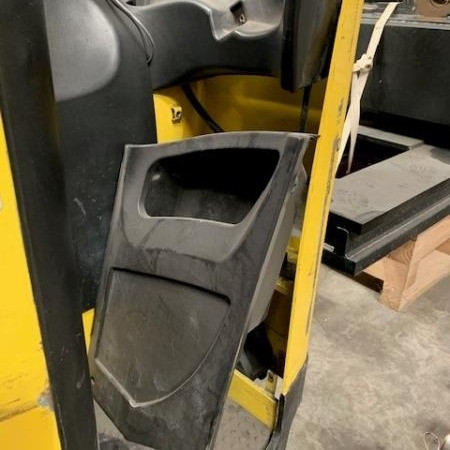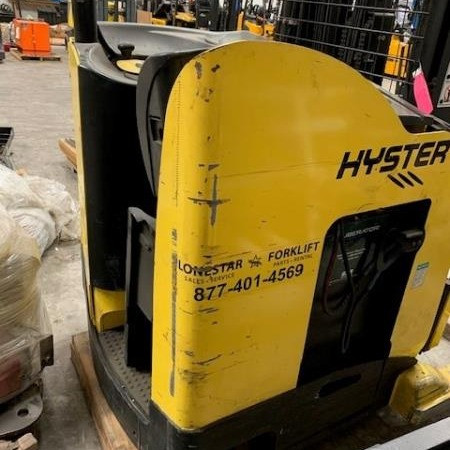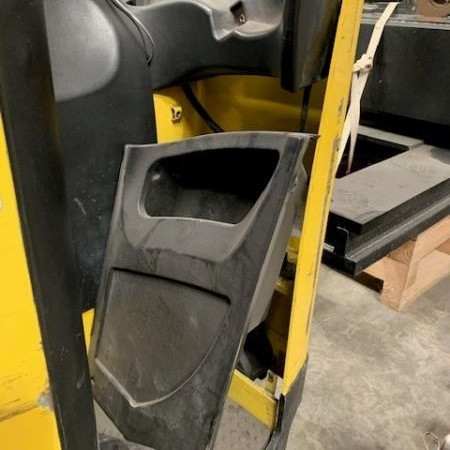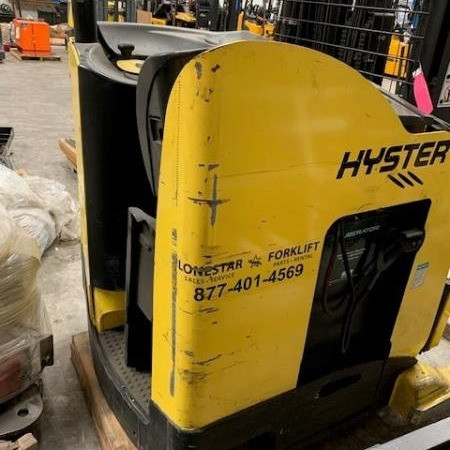Narrow Aisle Forklift Vermont
Used Narrow Aisle Forklift Vermont - Forklifts have revolutionized shipping and storage across the globe. First created at the beginning of the twentieth century, they are commonly seen and utilized through a variety of industries. There are precise load amounts listed to provide maximum safety. There are specified forward center of gravity recommendations also located on the manufacturer’s nameplate for operational safety. Removing the nameplate is against the law in many places without permission from the manufacturer. The nameplate is situated for easy reference and should always be visible.
Thanks to rear-wheel steering, forklifts can work easily in tight corners. Since there is no caster action while steering a forklift, it is not necessary to apply steering force in order to deliver a constant turning state. If the load is unstable, the entire forklift can become insecure. The cargo and the machine need to be considered a joint unit that has a continuously varied center of gravity. It is very unsafe for the operator to turn at high speeds with a raised load. A dangerous tip over instance can occur when gravitational and centrifugal forces are combined. Strict forklift load limits need to remain consistent for safety. The limit of the fork load decreases with elevation. An additional safety measure is the loading reference plate located on the forklift. It is not recommended to lift personnel without proper safety gear.
This equipment is commonly relied on in distribution centers and warehouses. Certain job sites have drive-in/drive-thru racking that allows the forklift to travel into a bay to deposit or retrieve a pallet. There is often guide rails on the floor to guide drivers inside the bay. Pallets are situated on cantilevered arms or rails with the help of experienced operators. Since each pallet has to enter and exit the storage unit, there is more potential for damage in this kind of facility. Buildings that use forklifts require efficient and safe moving machines. Fork truck dimensions including mast width and overall width need to be taken into consideration very carefully during the design.
The hydraulics are a central component. They either controlled with levers to manipulate hydraulic valves directly or with actuators that are electrically controlled with smaller levers. Many ergonomically designed forklifts are available. There is a variety of design features and load capacities to ensure there is a forklift for every job. Most forklifts in normal warehouse settings feature load capacities between one and five tons. Some models offer a fifty-ton lifting capacity for lifting crazy loads and working on shipping containers.
Construction sites are common places to see forklifts in action. They are continuously employed to carry heavy items over rough terrain and for great distances. These industrial machines combine vehicle capacity and lifting ability. Forklifts unload pallets of tools, bricks, construction items, steel beams and things from a delivery truck and taking them where they need to be deposited. The majority of shipping firms utilize truck-mounted forklifts to offload construction related items.
Warehouses commonly use forklifts for loading and unloading items. There are numerous forklift models available from pedestrian-operated to driver-operated units. Forklift operators rely on side-shifters to tilt the mast and move loads; offering precise fork lowering and raising to maintain a stable, balanced load.
Recycling plants use forklifts for emptying the recycling trucks and containers and transporting items to sorting locations. These machines can load and unload tractor trailers, railway cars, elevators, straight trucks and more. Cage attachments are available for moving items that may slide off the forks such as tires.
Preparing the work area is an important step prior to beginning the loading or unloading. To avoid overturning of the machine, fixed jacks are used to support the semi-trailer that is not coupled to a tractor. Pay attention to ensure that the vehicle entry door’s height clears the forklift height by a minimum of five centimeters. Ideally, docks should be clear from debris and dry along with the dock plates. While traveling empty, the forks need to be pointed downward and when traveling with a load they are kept pointing up.
The most common type of forklift is the Counterbalance. This machine has forks located at the front of the unit with a rear-designed weight to counter or offset the front load. This lift truck has no extended arms and is simple to operate. Drivers can ride up the load or the racking. These forklifts are available in electric, propane or diesel.
The majority of warehouse operations rely on a Reach forklift. This kind of forklift is commonly used for interior places. The Reach is able to extend beyond the forklift and use its’ stabilization legs to reach the racking while providing a height that most forklifts are unable to attain. The legs offer support to the forklift and make weight unnecessary to counterbalance the lift. Double Reach forklifts are another popular option. The Double Reach lift features extended forks that are capable of reaching twice as deep as standard forks with the capacity to grasp two pallets from the same racking facility.
A Walkie is an Electric Pallet Truck’s nickname. These models are made so the operator walks behind the truck. This motorized machine is capable of maneuvering into tiny spaces and can lift heavier pallets. These machines are useful and vital for moving pallets and depositing them where needed. This machine can travel backward or forward thanks to a hand throttle. Additionally, this machine can stop quickly which is beneficial. There are numerous kinds of walkies, some even designed with a platform for the operator to safely stand on. Double Walkie trucks showcase extended forks to enable the operators the ability to maximize two pallets simultaneously.
Narrow Aisle Forklift PDF
Stock Number: DP-RAY109 GL
Make: RAYMOND
Model: EASI R40TT
Year: 2006
| Stock Number |
DP-RAY109 GL |
| Make |
RAYMOND |
| Model |
EASI R40TT |
| Year |
2006 |
| Category |
Narrow Aisle Forklift |
Stock Number: LS13774 GL
Make: CAT
Model: NR3000
Year: 2006
| Stock Number |
LS13774 GL |
| Make |
CAT |
| Model |
NR3000 |
| Year |
2006 |
| Category |
Narrow Aisle Forklift |
Stock Number: DP-RAY045 GL
Make: RAYMOND
Model: EASI R40TT
Year: 2005
| Stock Number |
DP-RAY045 GL |
| Make |
RAYMOND |
| Model |
EASI R40TT |
| Year |
2005 |
| Category |
Narrow Aisle Forklift |
Stock Number: 207131 GL
Make: Jungheinrich
Model: ETR 235
Year: 2013
| Stock Number |
207131 GL |
| Make |
Jungheinrich |
| Model |
ETR 235 |
| Year |
2013 |
| Category |
Narrow Aisle Forklift |
Stock Number: LS15309 GL
Make: YALE
Model: OS030ECN
| Stock Number |
LS15309 GL |
| Make |
YALE |
| Model |
OS030ECN |
| Category |
Narrow Aisle Forklift |
Stock Number: DP-CLK380 GL
Make: CLARK
Model: NPX20
Year: 2018
| Stock Number |
DP-CLK380 GL |
| Make |
CLARK |
| Model |
NPX20 |
| Year |
2018 |
| Category |
Narrow Aisle Forklift |
Stock Number: LS14253 GL
Make: HYSTER
Model: N40ZRS
Year: 2013
| Stock Number |
LS14253 GL |
| Make |
HYSTER |
| Model |
N40ZRS |
| Year |
2013 |
| Category |
Narrow Aisle Forklift |
Stock Number: LS14767 GL
Make: RAYMOND
Model: 60-C40TT
Year: 94
| Stock Number |
LS14767 GL |
| Make |
RAYMOND |
| Model |
60-C40TT |
| Year |
94 |
| Category |
Narrow Aisle Forklift |
Stock Number: DP-CLK171 GL
Make: CLARK
Model: NPX20
Year: 2016
| Stock Number |
DP-CLK171 GL |
| Make |
CLARK |
| Model |
NPX20 |
| Year |
2016 |
| Category |
Narrow Aisle Forklift |


